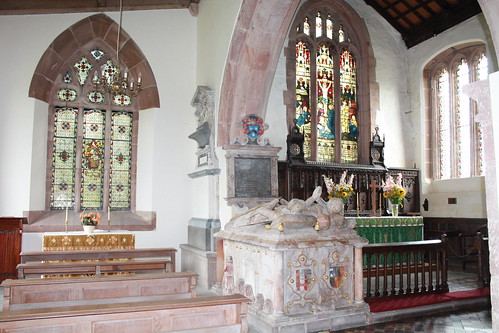 | |
| Memorial to George Wolryche, younger brother of the 1st baronet |
One would never guess from such a plain exterior there was so much crammed inside.
 |
| Lieutenant Thomas Orde Lawder Wilkinson VC |
As one walks down the path on the way out opposite St Andrew's church at Quatt is a large house. Originally built as the Dower House in the 18th Century I learnt from the 'Workhouses' site it was, as the result of the Poor Law Amendment Act, turned into a school for pauper children. In 1851 it housed 170 girls and boys, its 4 acres of land provided income, the boys cultivating the land and looking after cows and pigs and the girls working in the house and dairy. A gazetteer of this date extolled the "habits of industry, knowledge of gardening combined with honest principles and religious knowledge are blessings of incalculable amount" which the inhabitants obtained. At its peak it would educate 220 pupils but was closed by the 1900s probably because by that time there was state funded free schooling for all up to the age of 12. It would later become an independent primary school which went into liquidation in 2010, today I believe it has been turned into seven residential apartments.
What a lot of history within a few steps in a village of a couple of hundred people but the settlement is very old. The curious name derives from the Celtic word for wood - Coed and the Saxon word for farm - Tun. That is Coed-tun - "The village in the wood". By the time of the Domesday Book of 1086 it was listed as Quatone which has through the centuries morphed into the name of Quatt.
An entry to ABC Wednesday, a journey through the alphabet, this week sojourning at the letter Q here






5 comments:
Beautiful church with very nice interiors.
I LOVE old churches - history and integrity.
ROG, ABCW
What an interesting piece Joy, I really enjoyed reading all about Quatt.
Although I know parts of Shropshire I have never heard of or been to Quatt so that's on my day trip out list.
The inside of the church is beautiful, the outside looks so plain but wow!.....
When you step inside totally different picture!
Thanks for sharin this with us.
Best wishes,
Di.
ABCW team.
As a Canadian with British roots, I especially love the memorial.
can't imagine tombs inside the church.
Post a Comment